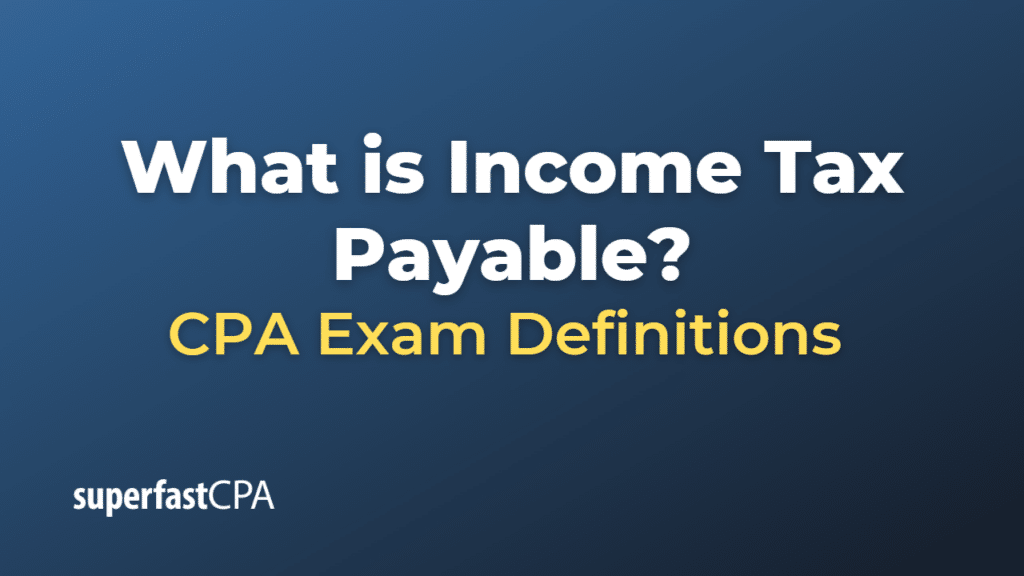Income Tax Payable
Income Tax Payable is a liability account found on the balance sheet that represents the amount of income taxes that a company owes to the federal, state, local, or foreign governments and has not yet paid. This account is used to track the actual current income tax expense that a company must pay, as opposed to the estimated expense which might be recorded in the Income Tax Expense account.
Here’s how it works:
When a company calculates its income tax expense for the year (as part of preparing its income statement), it records a debit (increase) to Income Tax Expense and a corresponding credit (increase) to Income Tax Payable. This represents the amount the company has calculated it owes in taxes based on its taxable income.
Then, when the company actually pays its tax bill, it records a debit (decrease) to Income Tax Payable and a credit (decrease) to Cash, reflecting the outflow of cash to pay the tax liability.
The balance in the Income Tax Payable account represents the amount of income taxes owed by the company as of a particular point in time. Any amount in this account should be considered a current liability, as it represents a payment obligation likely due within the next year.
As with other areas of tax accounting, the process of accounting for income taxes can be quite complex and often requires the expertise of accounting and tax professionals to ensure accuracy and compliance with all relevant tax laws and accounting standards.
Example of Income Tax Payable
Let’s look at a simplified example for a hypothetical company, XYZ Corporation.
Let’s assume that XYZ Corporation has computed its Income Tax Expense for the fiscal year ending on December 31, 2023, as $150,000. This is the amount calculated based on the company’s taxable income for the year and the relevant tax rates.
When this expense is recognized, the company would make the following journal entry:
| Account | Debit | Credit | |
|---|---|---|---|
| 1 | Income Tax Expense | $150,000 | |
| Income Tax Payable | $150,000 |
This entry increases Income Tax Expense (which reduces the company’s net income for the year) and also increases Income Tax Payable (which is a liability showing that the company owes $150,000 in taxes).
Later, when XYZ Corporation pays its taxes, it would make the following entry:
| Account | Debit | Credit | |
|---|---|---|---|
| 2 | Income Tax Payable | $150,000 | |
| Cash | $150,000 |
This entry decreases the company’s cash (to reflect the payment of the taxes) and also decreases Income Tax Payable (since the liability is now paid off).
So, in this example, Income Tax Payable was the account used to track the amount of income taxes that XYZ Corporation owed but had not yet paid. Once the taxes were paid, the balance in the Income Tax Payable account would return to zero until the next tax expense is calculated.













